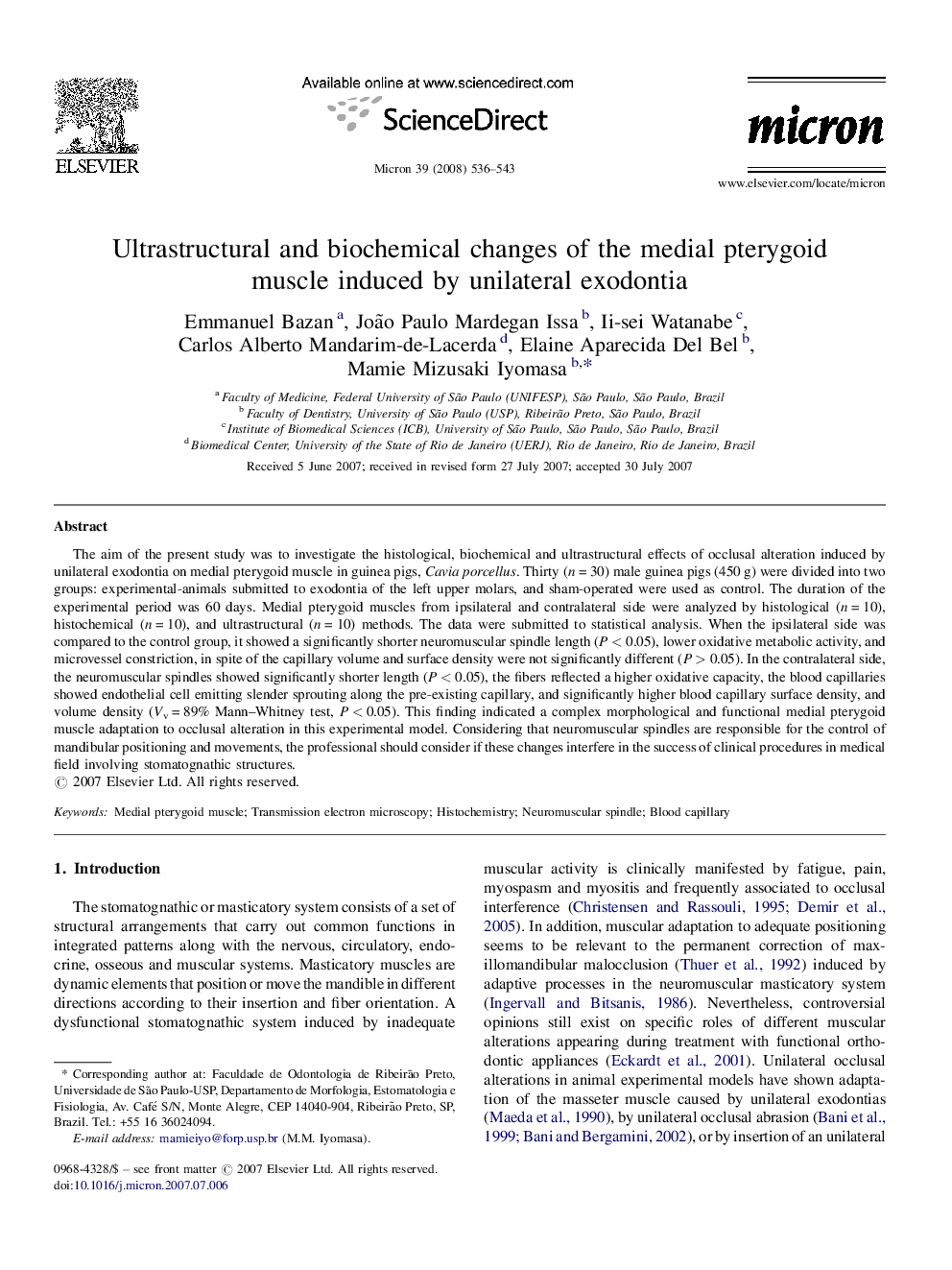| Article ID | Journal | Published Year | Pages | File Type |
|---|---|---|---|---|
| 1590043 | Micron | 2008 | 8 Pages |
Abstract
The aim of the present study was to investigate the histological, biochemical and ultrastructural effects of occlusal alteration induced by unilateral exodontia on medial pterygoid muscle in guinea pigs, Cavia porcellus. Thirty (n = 30) male guinea pigs (450 g) were divided into two groups: experimental-animals submitted to exodontia of the left upper molars, and sham-operated were used as control. The duration of the experimental period was 60 days. Medial pterygoid muscles from ipsilateral and contralateral side were analyzed by histological (n = 10), histochemical (n = 10), and ultrastructural (n = 10) methods. The data were submitted to statistical analysis. When the ipsilateral side was compared to the control group, it showed a significantly shorter neuromuscular spindle length (P < 0.05), lower oxidative metabolic activity, and microvessel constriction, in spite of the capillary volume and surface density were not significantly different (P > 0.05). In the contralateral side, the neuromuscular spindles showed significantly shorter length (P < 0.05), the fibers reflected a higher oxidative capacity, the blood capillaries showed endothelial cell emitting slender sprouting along the pre-existing capillary, and significantly higher blood capillary surface density, and volume density (Vv = 89% Mann-Whitney test, P < 0.05). This finding indicated a complex morphological and functional medial pterygoid muscle adaptation to occlusal alteration in this experimental model. Considering that neuromuscular spindles are responsible for the control of mandibular positioning and movements, the professional should consider if these changes interfere in the success of clinical procedures in medical field involving stomatognathic structures.
Related Topics
Physical Sciences and Engineering
Materials Science
Materials Science (General)
Authors
Emmanuel Bazan, João Paulo Mardegan Issa, Ii-sei Watanabe, Carlos Alberto Mandarim-de-Lacerda, Elaine Aparecida Del Bel, Mamie Mizusaki Iyomasa,
